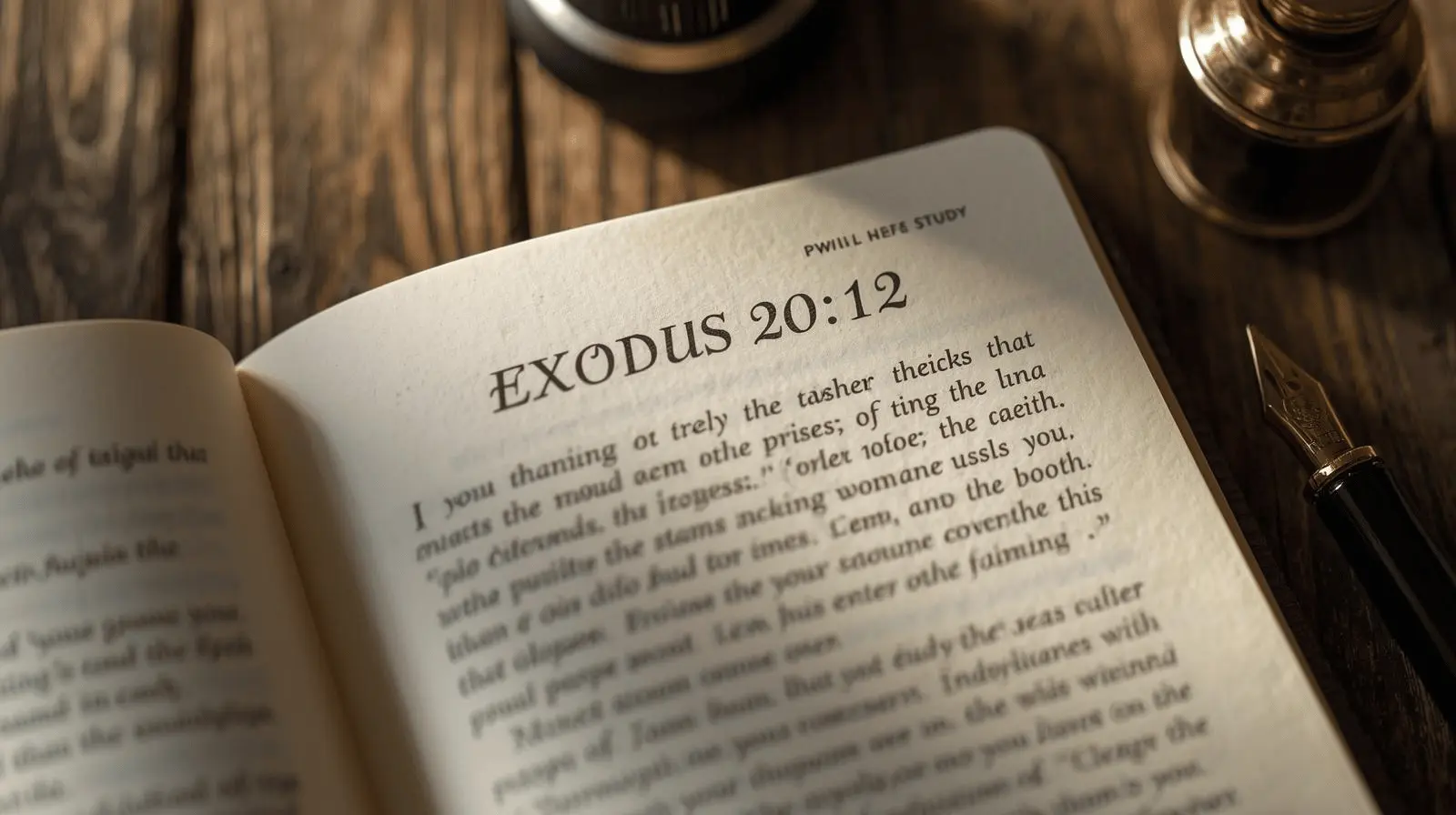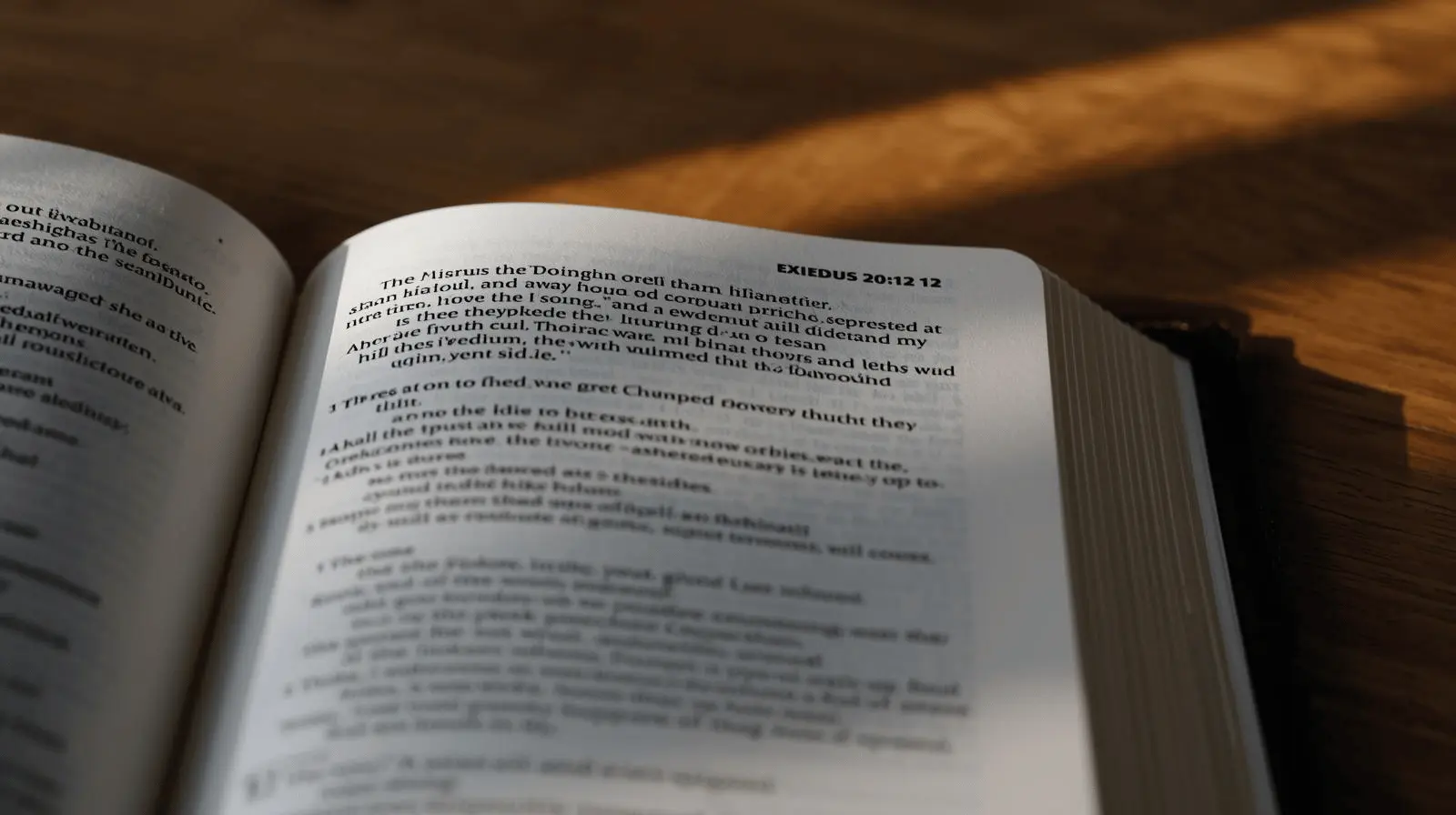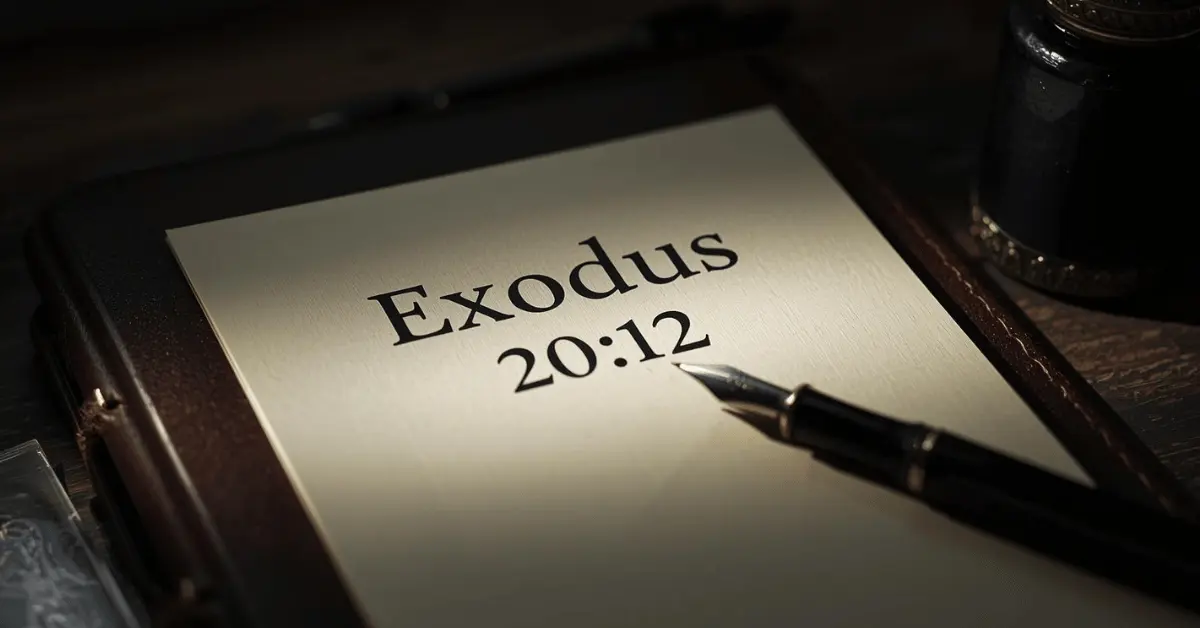The phrase “Honor thy father and thy mother” is among the most memorable commands in Scripture. Found in Exodus 20:12, it sits at the heart of the Ten Commandments, shaping family and community life for generations.
These differences aren’t contradictions but reflections of language, culture, and translation philosophy.
1. King James Version (KJV) — Classic and Reverent
“Honour thy father and thy mother: that thy days may be long upon the land which the Lord thy God giveth thee.”
The KJV, first published in 1611, uses formal, majestic language that has shaped Christian devotion for centuries. The older spelling “Honour” and the phrase “giveth thee” reflect its historic English style.
➡️ This version conveys gravity and timelessness, giving the command a sense of solemn permanence.
2. New International Version (NIV) — Clear and Accessible
“Honour your father and your mother, so that you may live long in the land the Lord your God is giving you.”
The NIV, released in the 1970s, focuses on clarity and modern readability. Its straightforward wording makes it widely used in churches, study groups, and personal devotion. The phrase “so that you may live long” emphasizes the promise connected to obedience.
➡️ The NIV presents the command in plain, contemporary English, making it especially approachable for new readers of Scripture.
3. English Standard Version (ESV) — Balanced and Faithful

“Honour your father and your mother, that your days may be long in the land that the Lord your God is giving you.”
The ESV maintains close alignment with the original Hebrew text while keeping smooth readability. Its slightly formal tone echoes the KJV but with modern clarity.
➡️ This version appeals to readers seeking a balance of scholarly accuracy and everyday comprehension.
4. New Living Translation (NLT) — Conversational and Practical
“Honour your father and mother. Then you will live a long, full life in the land the Lord your God is giving you.”
The NLT expands the promise by adding “full life,” making the blessing about not just quantity of years but also quality. Its conversational tone makes it one of the most accessible translations for families and personal reflection.
➡️ The NLT draws out the practical and relational side of this command, showing how obedience leads to flourishing.
5. New King James Version (NKJV) — Tradition Refined

“Honour your father and your mother, that your days may be long upon the land which the Lord your God is giving you.”
The NKJV, published in 1982, updates the language of the KJV without losing its structure and reverence. It replaces older terms like “giveth thee” with modern phrasing but keeps the same rhythm and weight.
➡️ The NKJV bridges past and present, preserving tradition while remaining accessible to modern readers.
Side-by-Side Comparison Table
| Translation | Wording of Exodus 20:12 | Distinctive Feature |
|---|---|---|
| KJV | “Honour thy father and thy mother…” | Formal, historic, reverent |
| NIV | “Honour your father and your mother…” | Clear, modern, widely accessible |
| ESV | “Honour your father and your mother…” | Accurate, balanced, readable |
| NLT | “Honour your father and mother. Then you will live a long, full life…” | Conversational, emphasizes quality of life |
| NKJV | “Honour your father and your mother…” | Preserves tradition with updated language |
The Hebrew Roots of “Honour”

The Hebrew word kabed (כָּבֵד) means “to give weight, to treat as significant.” Honoring parents is about recognizing their importance and treating them with dignity.
- The KJV/NKJV highlight the command’s solemnity.
- The NIV/ESV keep the structure close to the Hebrew while making it understandable.
- The NLT expands the blessing, showing the fullness of life that comes with obedience.
➡️ Each translation captures a different nuance of the original Hebrew, together enriching our understanding.
Related Posts
- Why the Bible Commands Us to Honor Our Parents
- 10 Beautiful Bible Verses About Parents: Honor, Love & Obedience
- Honour Your Father and Mother: Meaning and Biblical Context
- Practical Ways for Adult Children to Honour Their Parents
- Seek First the Kingdom of God — True Meaning Simplified
How Translation Choices Reflect Culture
Every translation reflects the priorities of its time:
- KJV (1600s): Designed for liturgy and formal reading.
- NIV (1970s): Shaped by the need for modern evangelism and accessibility.
- NLT (1990s): Aimed at everyday language and relational application.
- ESV/NKJV: Strive for balance — faithful to the text yet readable today.
➡️ Understanding cultural context explains why wording differs without altering meaning.
Theological Implications of Each Translation
These wording choices highlight different aspects of God’s truth:
- KJV/NKJV: God’s authority is binding across generations.
- NIV/ESV: Emphasize continuity of blessing through obedience.
- NLT: Shows how obedience impacts both longevity and quality of life.
➡️ Together, the translations remind us that honoring parents is both a sacred duty and a source of blessing.
Practical Application: Using Multiple Translations

How can believers make the most of these differences?
- For study: Use ESV or NKJV for accuracy.
- For teaching: The NIV offers clarity for groups and sermons.
- For devotion: The NLT makes Scripture relatable and heartfelt.
- For heritage: The KJV provides depth of tradition and reverence.
➡️ Engaging with more than one translation enriches both head knowledge and heart devotion.
One Command, Many Voices
Though translations differ in wording, the message is consistent: God calls us to honour our parents, and He attaches a promise of blessing to this command. From the classic cadence of the KJV to the conversational tone of the NLT, the command is clear, timeless, and life-giving.
For further exploration, you can compare these translations directly on Bible Gateway.
Commonly Asked Questions
Why do translations of Exodus 20:12 differ?
Because translators balance literal accuracy, readability, and cultural context differently.
Which translation is best for study?
The ESV and NKJV are excellent for deep study, while the NIV and NLT are best for daily reading.
Does the meaning change across translations?
No. The command and its promise remain the same, even if the words differ slightly.
Why does the KJV use “Honour” instead of “Honour”?
“Honour” is the British spelling used in 1611. American English simplified it to “Honour.”
Should I read more than one translation?
Yes. Comparing translations offers fuller insight and helps you see both the depth and the clarity of God’s Word.


1 thought on “5 Bible Translations of “Honor Thy Father and Mother” Compared”